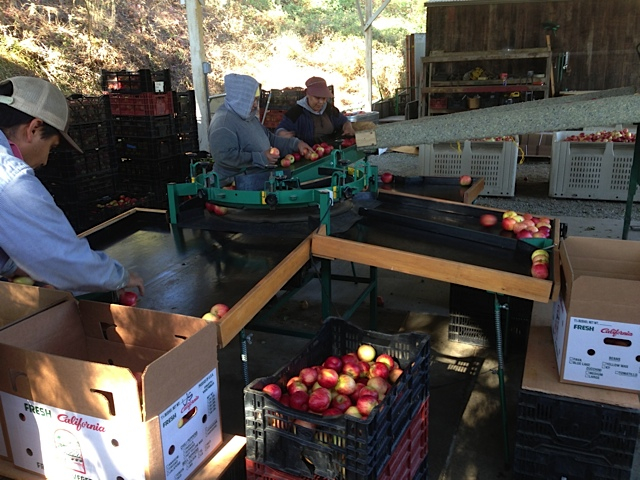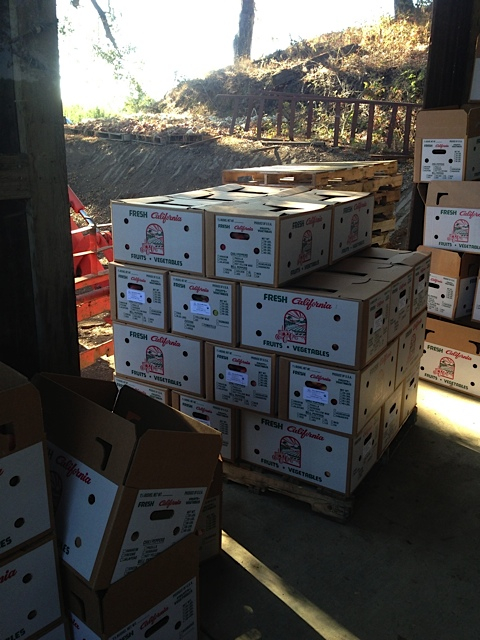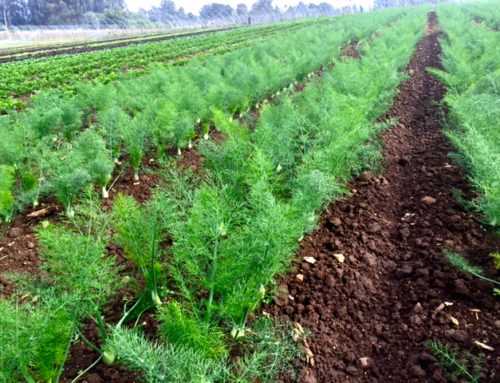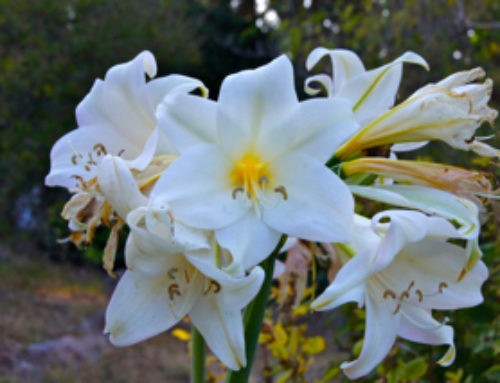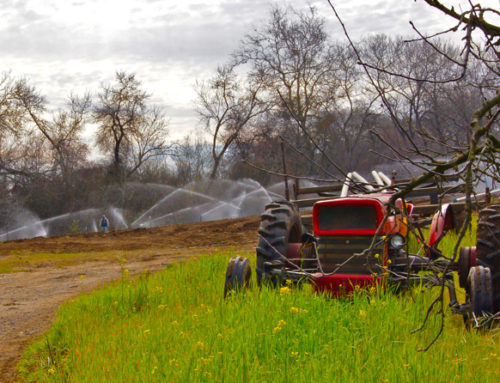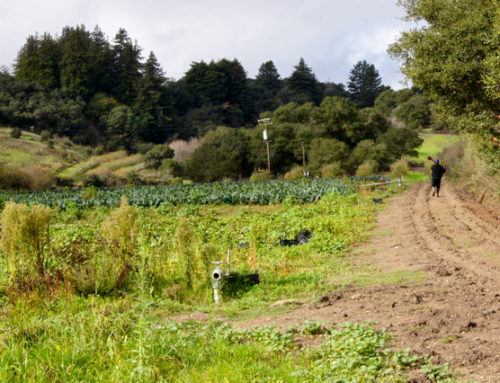Elisa’s summer vacation is now over, David is back in College, and the summer harvest has reached its peak. Although I resist letting go of summer, the transition into fall has already begun. Besides some early winter squash being ready for harvest and the pumpkins slipping into their orange dresses, the most telling sign of fall is the apple trees loaded with their colorful fruit.
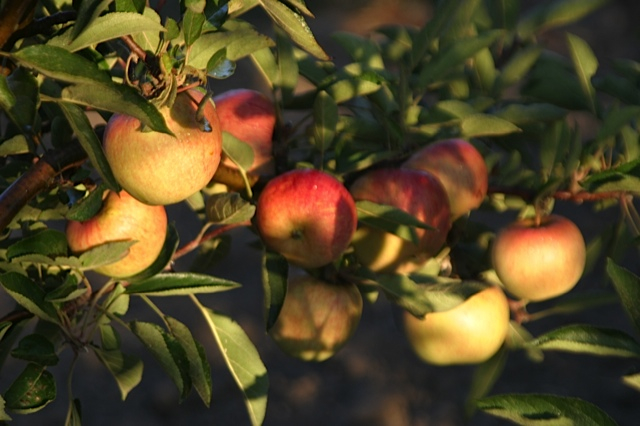
Braeburn Apples
A couple of weeks ago you started to get our earliest apples, the Sommerfelds, all of which are now harvested, sorted, and stored. This week we’ll start harvesting the Royal Galas, their red striped yellowish golden colors, crisp texture and perfect balance of sweet and tart flavors, makes this one my favorite fruit to eat.
During Saturday’s tomato u-harvest, many visitors took advantage of loading up with the temptingly easy to pick low hanging apples and eating them fresh off the tree. For me the pleasure of growing and biting into a fully tree-ripened apple triggers a satisfying sense of appreciation for the history and culture of apple farming in this Valley. Few people know what goes into mastering the growing practices to succeed in offering a great tasting apple.
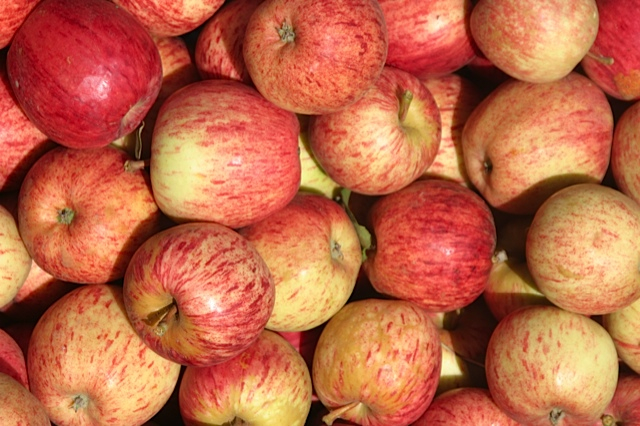
Royal Gala Apples
An apple orchard needs year-round attention, and the perennial cycle is very different from the annual, season-focused vegetable crops we grow. Apples lean heavily on human help and it takes a lot of devotion, from winter pruning through post-harvest cleanup in late fall.
Apples thrive in our climate. One wouldn’t think by driving through the Pajaro Valley that this was once one of the largest apple growing districts in the country. Most of the apple orchards have been pushed over by bulldozers, replaced by the more lucrative berry, vegetable and flower crops. The predominant variety then was the Newtown Pippin, a variety originally from New York, introduced by settlers in the 1850s. Today it is still the trademark apple in Martinelli’s popular apple juice, processed here in Watsonville, and probably the reason why Newtown Pippins are still grown commercially in this area.
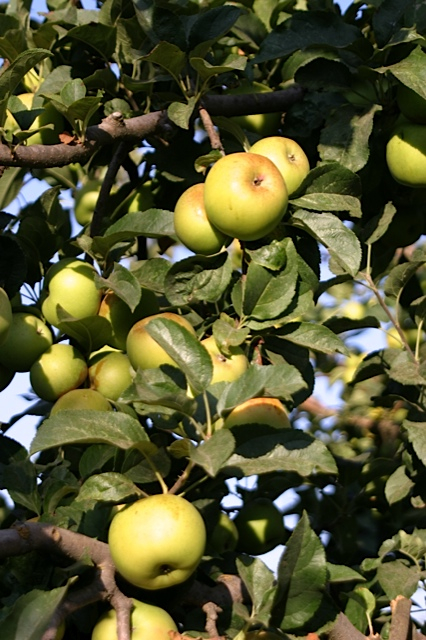
Newtown Pippins
Here on the farm, we grow 10 different varieties of apples on approximately 7 acres. Most of the production coming from 5 acres of Fujis, Galas, Newtowns, and Sommerfelds. The other two acres are a diverse mix of two-year-old grafted Jonagolds, McIntosh, Honey Crisp, Braeburn, Empire, and Pink Ladies which will come into full production in the next couple of years.
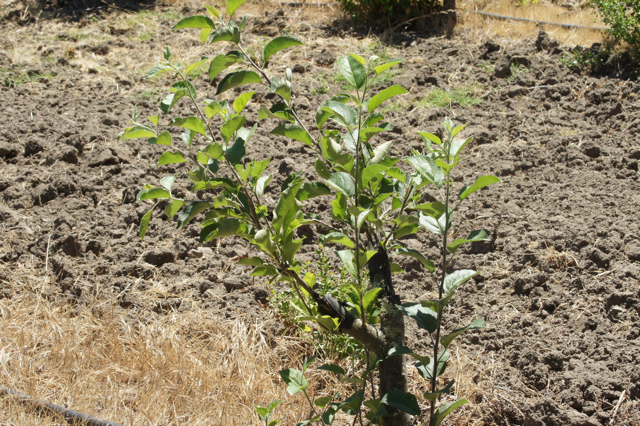
Apple tree grafted earlier this year.
Starting in winter, the dormant season, apple trees first have to be pruned, and then sprayed with dormant oils and sulphur to fend of insect and fungal diseases. Pheromones conveniently manufactured into plastic twist ties are attached to the trees at a precise time in the spring to confuse the mating cycle of codling moths, which will greatly reduce worms from hatching and burrowing into the apples. Once the soil dries the orchard needs to be cultivated, both to control weed competition and trap valuable winter moisture in the ground. In April, beehives are brought in to ensure good pollination, and after a successful fruit set, the entire month of May and part of June is spent hand thinning trees (yes, every single flower cluster is hand thinned from 5 down to 1 or two small fruitlets) to ensure fruit will develop into a marketable size. The first seasonal watering happens sometime in June, and continues as needed until August or September.

Apple bin and ladder near a tree being harvested.
Then it’s time to prepare for harvest: bins need to be placed among the trees in the orchard rows, and from early September until late October we harvest thousands of pounds of apples of which we hope a high percentage is of good quality to sell fresh in order to maximize our return.
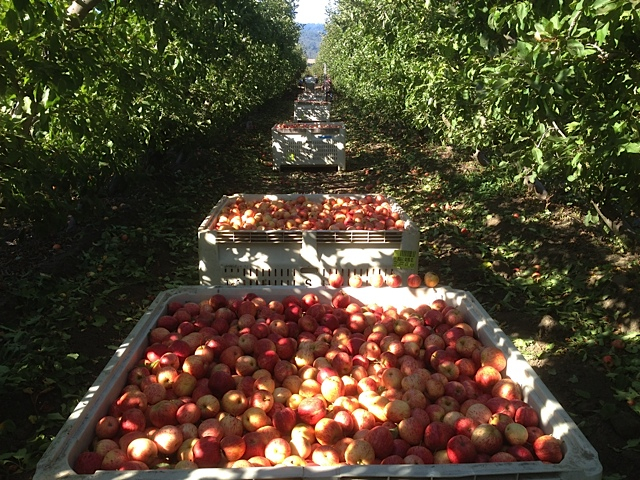
Bins of harvested Royal Galas waiting to be picked up and taken to the sorter.
This year we are very excited to use an old refurbished apple sorter (see pictures below) to more efficiently sort by size and quality. Some of the quality criteria include color and shape, and any fruit defects such as worm damage, scab lesions, sunburned, bruised and misshapen fruit go into the juicer bin. As soon as the fruit is harvested and windfalls are picked off the ground, we add soil amendments and sow a cover crop before the wet winter months are upon us. Then the cycle starts again…
We hope you can join us for our Discovery Program fundraiser, Slice – A Dinner in the Orchard, on September 14th held in the middle of one of our apple orchards (get your tickets now, it’s only 10 days away) – to honor and celebrate the history and culture of this wonderful fruit and support our educational efforts at the same time. Don’t miss out; this event will be lots of fun!



